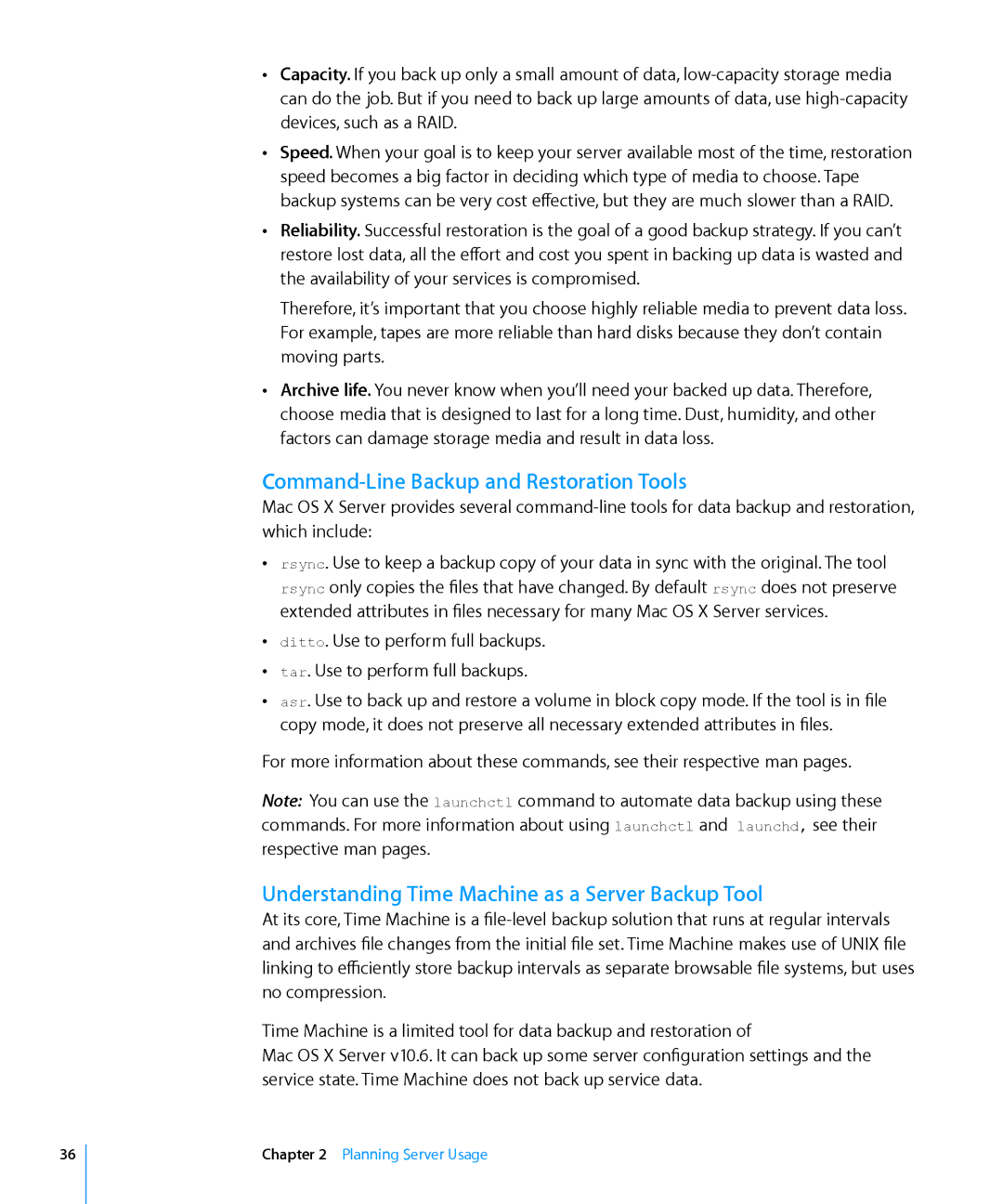ÂÂ Capacity. If you back up only a small amount of data,
ÂÂ Speed. When your goal is to keep your server available most of the time, restoration speed becomes a big factor in deciding which type of media to choose. Tape backup systems can be very cost effective, but they are much slower than a RAID.
ÂÂ Reliability. Successful restoration is the goal of a good backup strategy. If you can’t restore lost data, all the effort and cost you spent in backing up data is wasted and the availability of your services is compromised.
Therefore, it’s important that you choose highly reliable media to prevent data loss. For example, tapes are more reliable than hard disks because they don’t contain moving parts.
ÂÂ Archive life. You never know when you’ll need your backed up data. Therefore, choose media that is designed to last for a long time. Dust, humidity, and other factors can damage storage media and result in data loss.
Command-Line Backup and Restoration Tools
Mac OS X Server provides several
ÂÂ rsync. Use to keep a backup copy of your data in sync with the original. The tool rsync only copies the files that have changed. By default rsync does not preserve extended attributes in files necessary for many Mac OS X Server services.
ÂÂ ditto. Use to perform full backups. ÂÂ tar. Use to perform full backups.
ÂÂ asr. Use to back up and restore a volume in block copy mode. If the tool is in file copy mode, it does not preserve all necessary extended attributes in files.
For more information about these commands, see their respective man pages.
Note: You can use the launchctl command to automate data backup using these commands. For more information about using launchctl and launchd, see their respective man pages.
Understanding Time Machine as a Server Backup Tool
At its core, Time Machine is a
Time Machine is a limited tool for data backup and restoration of
Mac OS X Server v10.6. It can back up some server configuration settings and the service state. Time Machine does not back up service data.
36
